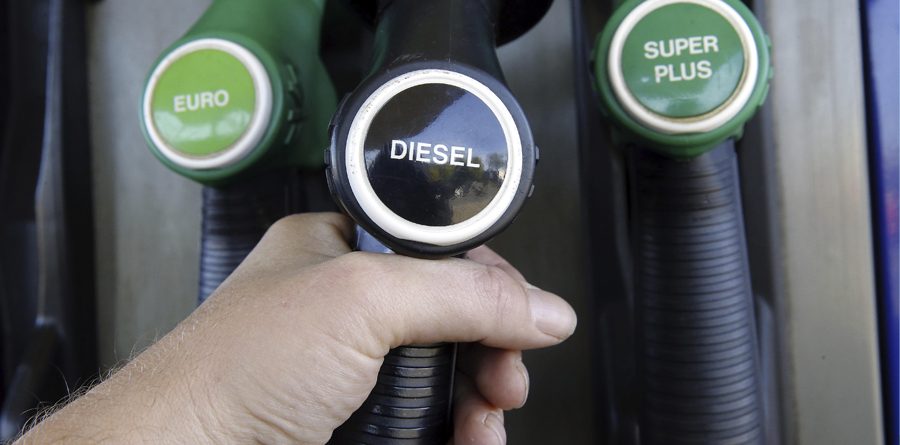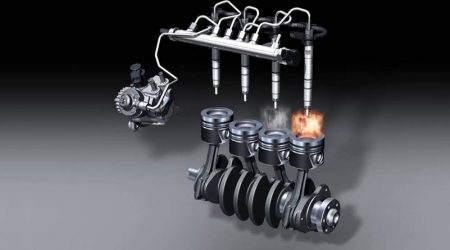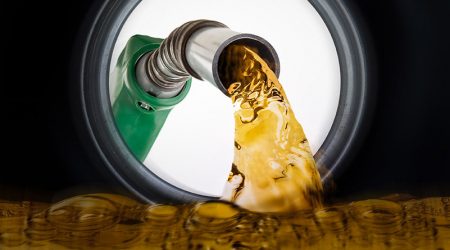“LONG LIVE THE DIESEL” HERE 7 GOOD REASONS TO SAY SO
Harsh times for diesel engine passenger cars, hard to believe it just few years ago. It is said that diesel is dirty and contribute to increase the global pollution rate; these are just few accusations, not only from political world, that made diesel car sales decrease all over Europe. Besides these accusations that disorientate car drivers and public opinion, there is also the decision of some car factories to stop producing diesel engine in upcoming years which lead to a greater uncertainty. Is that so? Is diesel the villain to fight against? Even though we are biased, we tried to analyse the situation impartially and came to the conclusion that no, this is not the case; diesel still has a long way to go for (obviously) 7 different reasons but before listing them, let’s clarify that:
– Diesel engines are more efficient than petrol ones as they deplete less and produce fewer carbon dioxide, however the diesel mixture ignites by compression and causes the diesel engine to generate more particulate and nitrogen oxides.
– Specific tests on emission measurement found a huge difference between NOx emission laboratory results and on the road ones. This is why test procedures were changed.
1 – Euro 6dTemp engine, low pollutant
On September the 1st, 2019 new Euro 6d-Temp law has entered into force. Euro 6 standard stated Diesel NOx limit was 80 milligrams per kilometer, the Euro 6d-Temp allows a 110% deviation in the transition phase by the new test cycle, targeting the limit 168 mg / km . In 2020/2021 the gap will be 50% then 120 mg per kilometer for Diesel by using the Euro-d Final. As mentioned, this target must be reached both in WLTP circuit and on the road RDE tests. Modern diesel FAP and SCR engines (aimed to limit particulate and nitrogen oxides) are an efficient compromise between costs and environmental impact. The Euro 6 evolving process will end by new 6d-Final in January 2020, mandatory for homologations and then for registrations from 2021. The true problem is updating the total number of circulating cars; as a matter of fact, 37 million cars are 11 years old in Italy. Encouraging and easing people to buy new cars would help the environment effectively.
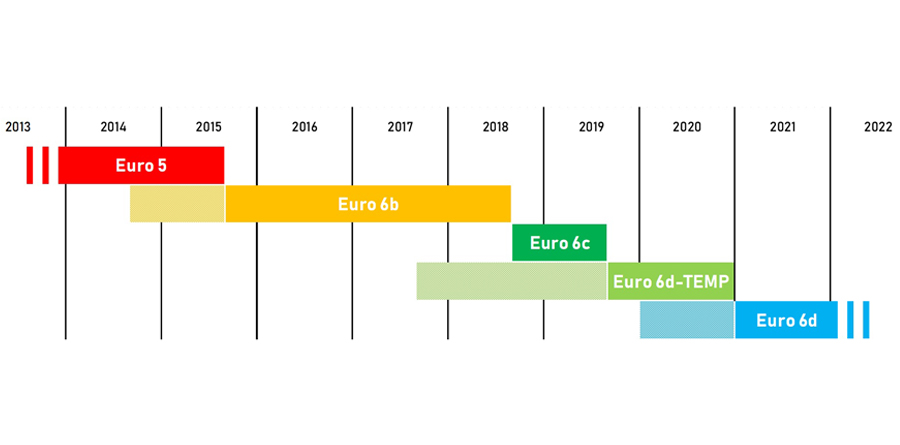
2 – No Diesel more CO2
Diesel car sales drop of 18% at the end of 2018 in Europe but enrolments were quite stable comparing to 2017. At the beginning of 2019, diesel car sales keep on decreasing: Spain (-33%), France (-23%), Italy (-22,5%) and United Kingdom (-20,5%). The situation is better in Germany (-4%). Although diesel market rate fell from 44 to 36%, CO2 levels in the atmosphere increased. The European Environment Agency has published some data confirming the forecasts for a new increase in carbon dioxide emissions produced by newly registered cars in 2018. In particular, CO2 emissions growing 1.6% compared to 2017, they were up for the second consecutive year. This data suggest that gasoline cars generate more CO2 emissions and the increasing sales rate of hybrid and electric cars (more than 20% in 2017 and more than 8% of the total amount of cars sold), could not be enough to low emission percentage.
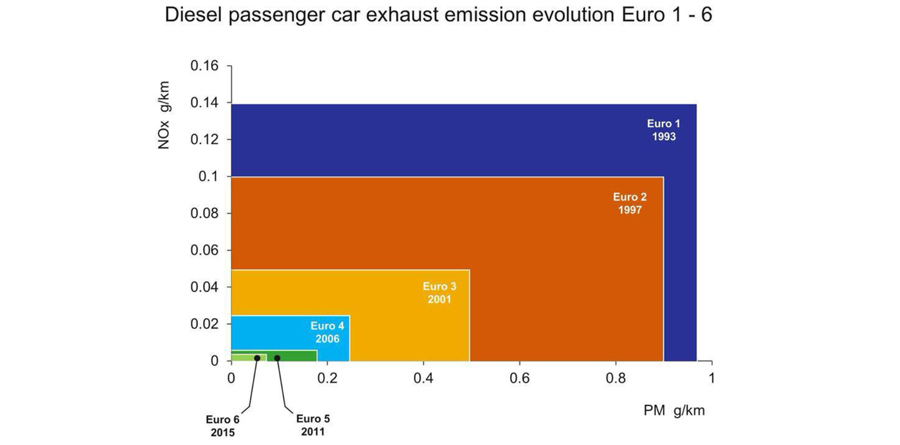
3 – Particulates: not only Diesel cars are responsible for
As per the previous points, new diesel engines release minimal number of particulates. According to latest studies on the causes of PM, only a small quantity of particulates released comes from the exhaust pipe car. A research held in Lombardy (source Wikipedia), one of the most polluted Italian regions, stated that burning woody biomass (pellet and wood stove) is the primary cause of 45 % particulate generation and dispersion in the atmosphere, while diesel engines are responsible for 14% and brake pads, tyre particulates for 13%, not to mention the impact of industrial emissions and other.
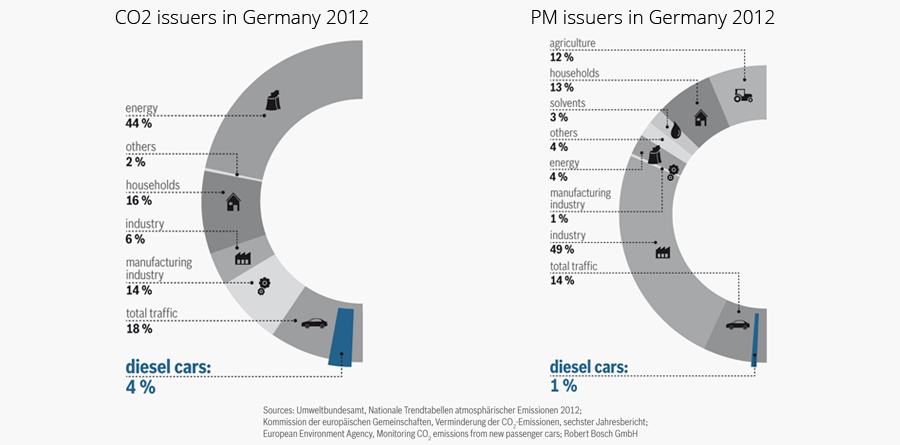
4 – The petrol car consumes more and produces particulates
Gasoline engines have always achieved higher specific powers but need more fuel using up more petrol and emitting higher amounts of CO2, accentuating the greenhouse effect and global warming. Last but not least: by virtue of the recent advances in diesel, petrol engine produces more PM than a modern TD. Many forget to mention that This is the reason why petrol engines are now equipped with a GPF particulate filter (Gasoline Particulate Filter). Nowadays petrol engines are so efficient due to the direct injection based on the same methodology of diesel engine. The ever-increasing temperatures and pressures of direct injection gasoline leads to the formation of particulates. A 2013 study held by the independent European association Transport & Environnement demonstrated how direct injection petrol engines could release even more particulate into the air than Diesel engines do.
5 – Electric, a stand-by promise
The promises on mass electric mobility have perhaps been too flattering. Green and clean but expensive and limited by the lack of infrastructure and with many pending issues, such as the CO2 emissions necessary for production, the renewability of electricity sources, the disposal of batteries and the rare elements necessary for their production. It is considered the perfect solution to heal our planet plagues; partially true as electric car does not pollute but it is undeniable that the production and distribution of this energy generates pollution. Moreover, especially in many European countries such as Italy and even more so in Africa, South America and Asia, infrastructure lacks. In addition, a zero-emission car costs an arm and leg and very few people can afford it. Much cheaper solution would be buying conventional models, perhaps the latest-generation turbodiesel.
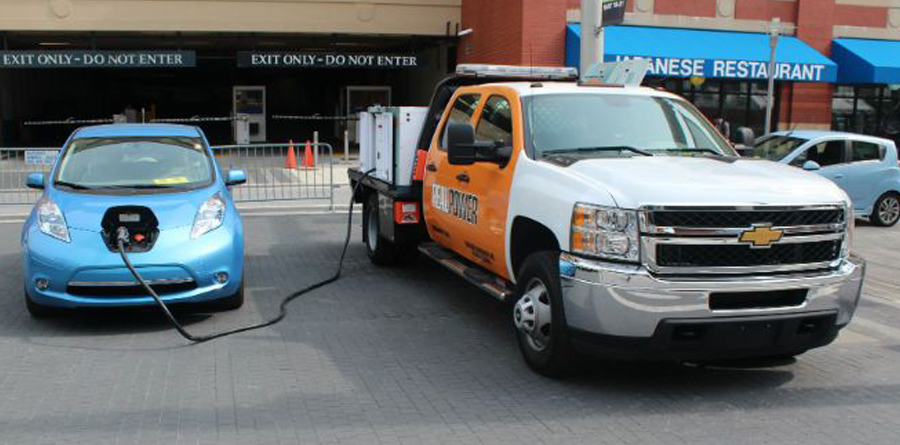
6 – Reliable and perfect for long runs
Two main reasons to consider this type of power supply are: diesel is cheaper than gasoline and is perfect for long distances. In fact, one of the winning features of diesel has always been the low price. It is good for long-haul transfers where it demonstrates the excellent passist characteristics with lower consumption for equal performance. Reliability. Diesel engines tolerate heavy workloads much better than other engines. If subjected to regular checks and maintenance, they guarantee extraordinary journeys and an easy life.
7 – On heavy vehicles, Diesel is undefeated
In the field of Heavy Vehicles petrol engines have always been a weak competitor for Diesel ones, both for performance levels (high engine revs, long distances, etc.) and cost saving as we could see during the years, given that the technology applied to Diesel engines has made significant progress in the field of heavy vehicles too. In particular high temperature heat treatments of the materials used, the new lubricants and the application of the Common Rail system (which favors the reduction of consumption and pollution) have further increased the advantages. A recent study by the independent European association Transport & Environnement has shown how the gas engines (LNG) on trucks pollute the air 5 times more than Diesel do.
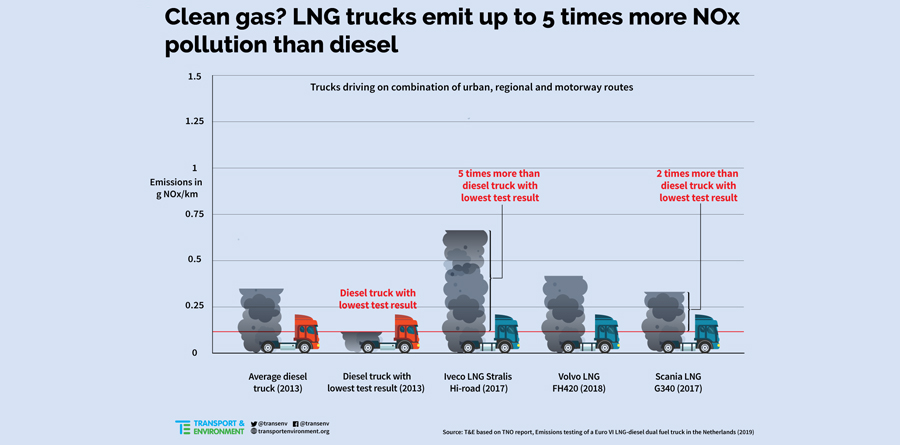
Obviously, supporting Diesel must not represent a closure to the other solutions or engines. Simply, at the current state of technology, diesel represents an excellent alternative, a valid compromise that can allow us to achieve the CO2 reduction targets expected in the coming years. Long live the Diesel!
Sources:- Wikipedia – PM10
- Automobilismo.it – “PSA sui benzina introdotto il filtro antiparticolato”
- Quattroruote.it – “Emissioni ACEA calano le Diesel aumenta la CO2”
- HDmotori.it – “Euro 6D TEMP: tutto quello che c’è da sapere | Speciale emissioni e consumi”
- Transportenvironment.org – “Diesel true dirty story”
- Transportenvironment.org – “Road tests show gas trucks 5 times worse air pollution?”

